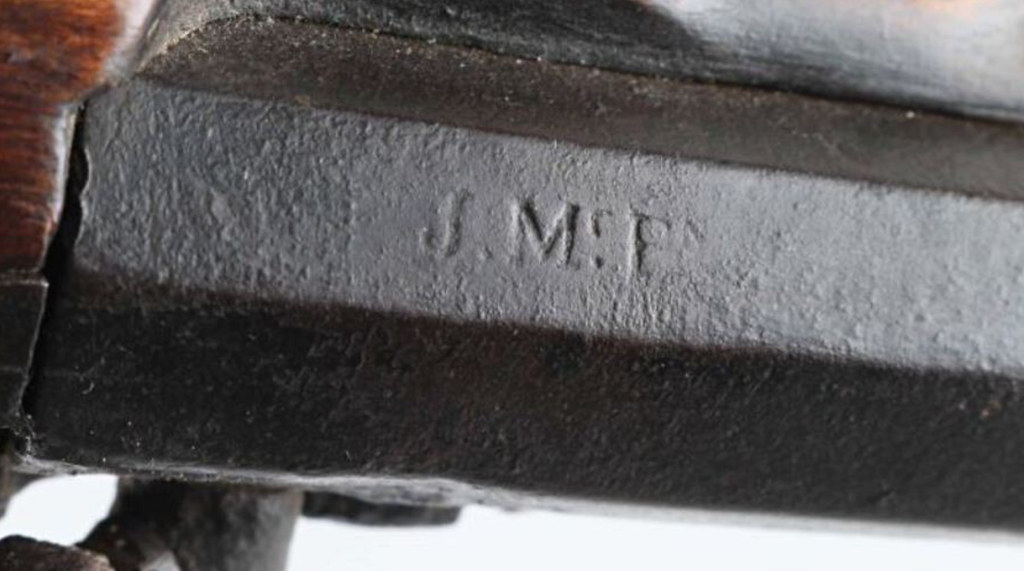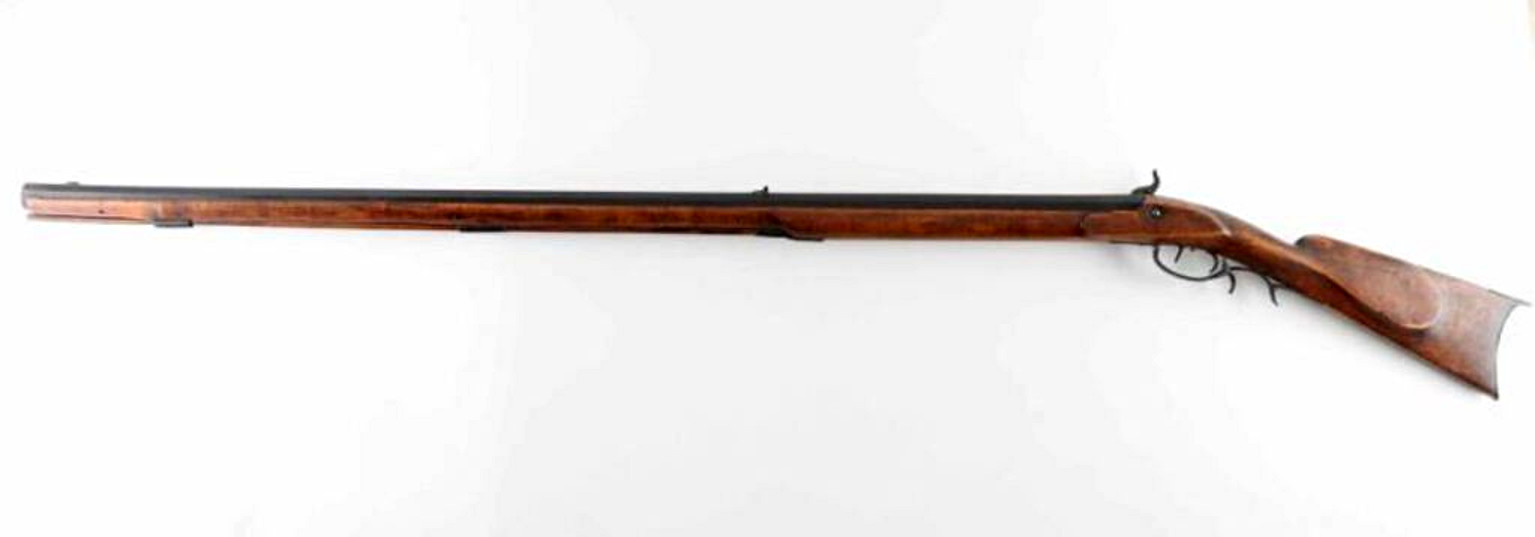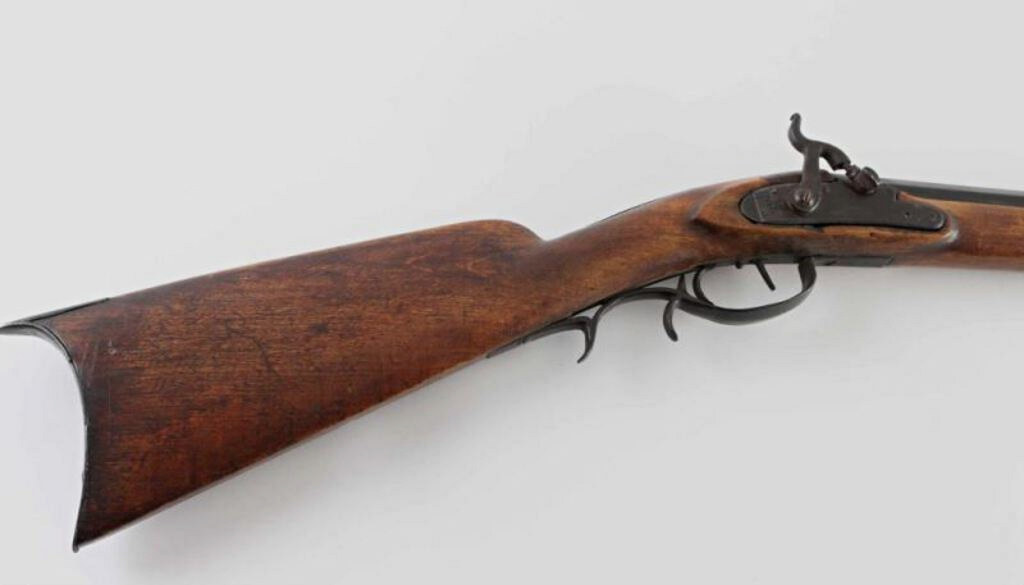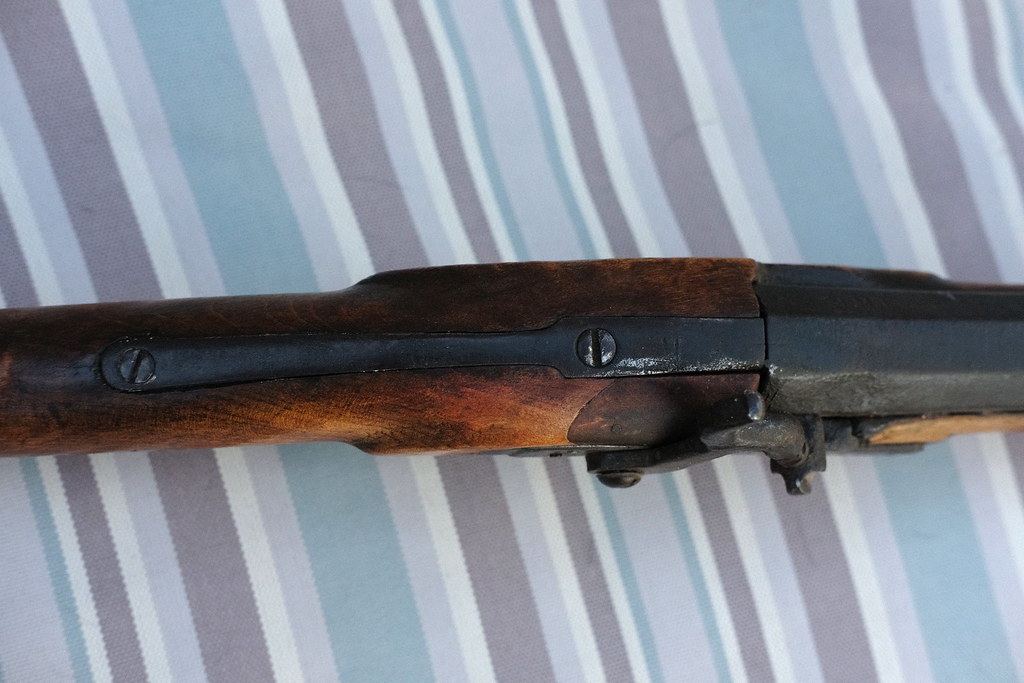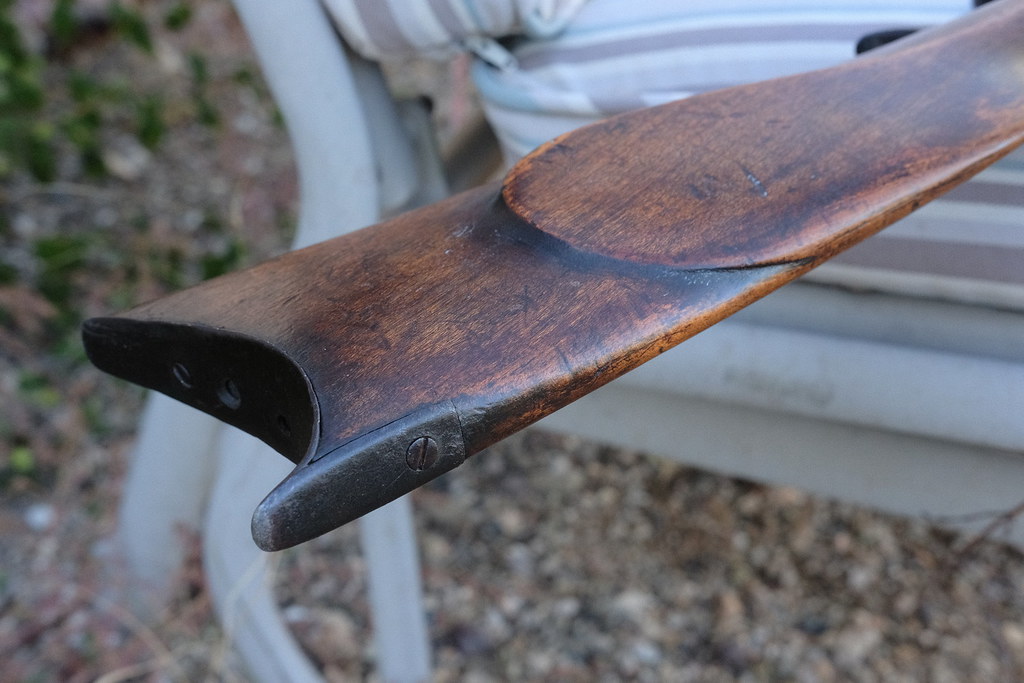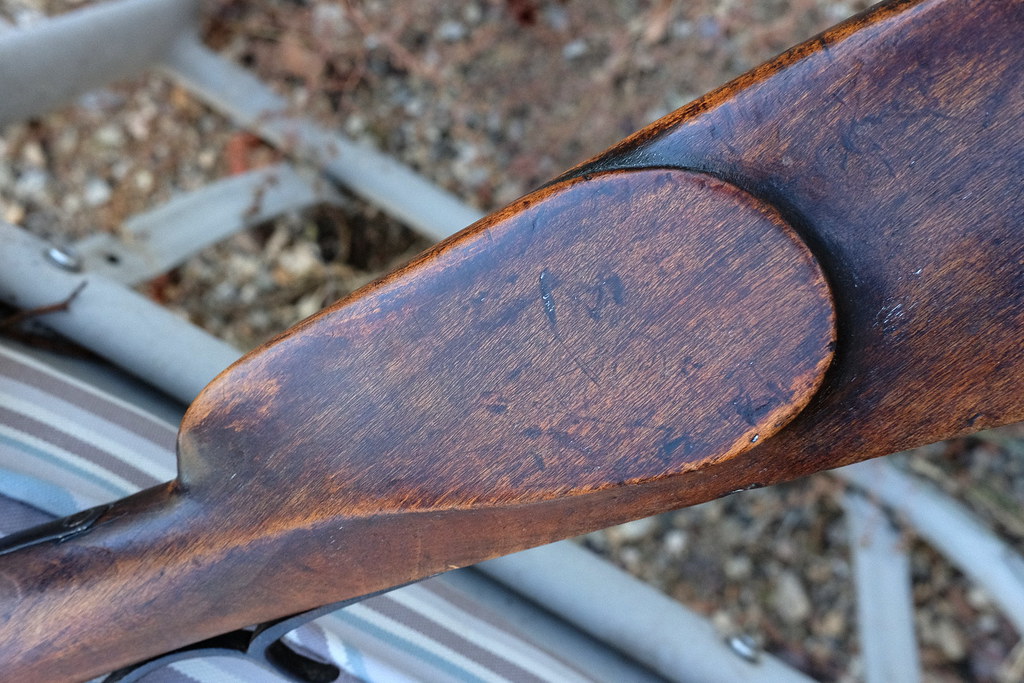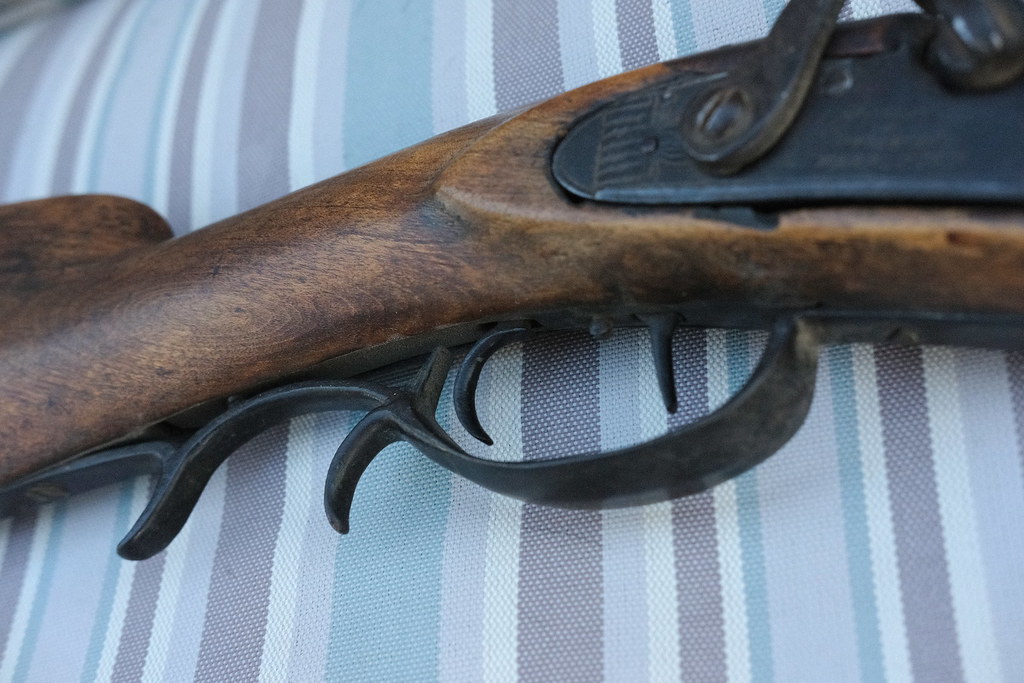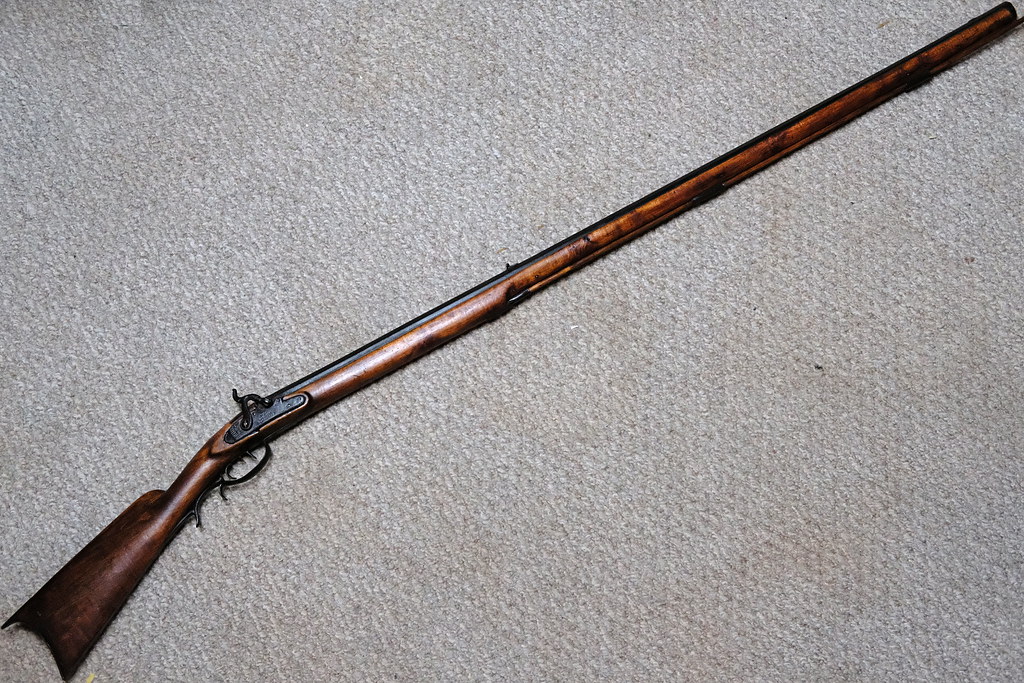I got the rifle in and am pretty impressed with it's condition and quality. The first big discovery was the "almost lollipop type" tang:
To me, that is an iconic clue that it's Appalachian region. Other pics then my rationale below.
Because I'm an engineer by training I like to logically look at the whole rifle, the sum of it's parts, not one piece. I've heard so far about 5-6 states mentioned, from OH, Indiana, NC, TN, VA, WVA (part of VA when this rifle was likely made), Alabama, a few others. The Midwestern's were eliminated early after I asked some probing questions. Basing everything on just one feature can throw you off...what if the trigger guard was replaced, for example? Lots of people broadly say "it's architecture looks XYZ" But WHAT are they seeing? Not explained.
By looking at all the features, is there more that point to one region? Where would you place each of these features, generally? My attempt:
Long tang filed into an "almost lollipop or dolls head" -
Strongly Southern Mountains
Long barrel (45 1/2 inches) - Somewhat Southern or Southern Mountains
Plain wood, maple - Somewhat Southern or Southern Mountains
English converted flintlock - Common on Southern Rifles
Iron buttplate, hand forged - Typically Southern Mountains, but not exclusively
Iron trigger guard, hand forged - Typically Southern Mountains, but not exclusively
Trigger guard attached into bottom of rifle with wood screws, no screw through tang into trigger plate - Typically Southern
No brass patch box - Somewhat Southern or Southern Mountains
No nose cap - Somewhat Southern or Southern Mountains
iron thimbles and ramrod entry thimble - ?
Straight comb, deep curved butt - Somewhat Southern or Southern Mountains
Holston cheekpiece - Sometimes Southern or Mountains, but not exclusively
Steep comb rise from wrist - ?
Long, narrow wrist - Somewhat Southern or Southern Mountains
So to me, it has more Southern features than features from any other region.
